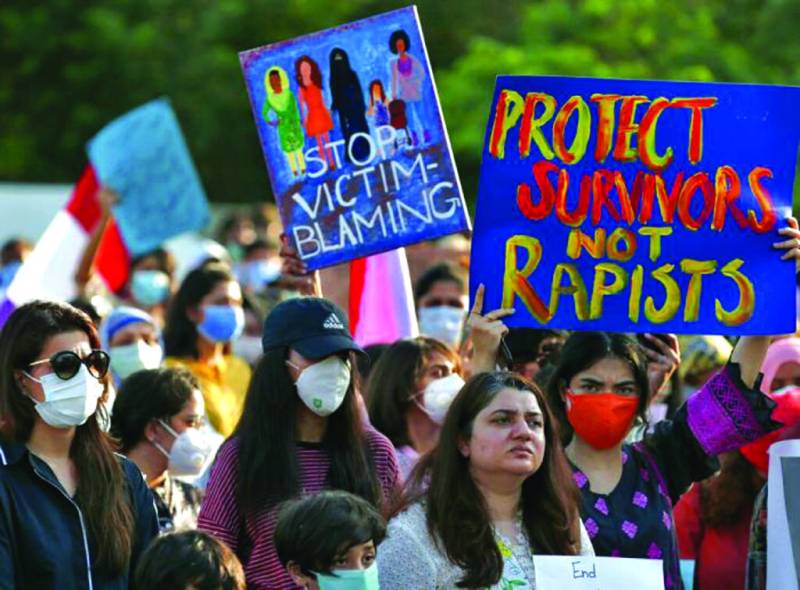
From the Nirbhaya rape case in New Delhi on public transport to the more recent motorway rape case in Pakistan, there have been numerous cases of violation of female bodies in public spaces across South Asian cities. We frequently hear about it and yet, as a society, we try to look at rape incidents as individual data points, often zooming in to dissect the circumstantial parameters such as age, profession, religion, geographical location of the rapist(s) or the victim and media and police responses – often missing out on larger structural and institutionalized issues such as the lack of safety in public spaces for women, and a lack of social acceptance of female bodies in public spaces. Moreover for women, it is not just rape that is the concern: it is also other acts such as catcalling, sexual advances and intentional touching that can diminish the sense of safety in public areas and, if left uncontrolled, can lead to crimes of a graver nature.
Through this article, I aim to link the unsafety of public spaces with a few underlying factors in South Asia and explore the reasons and possible remedial measures.
Simone de Beauvoir in her book The Second Sex says : “According to the French law, obedience is no longer included among the duties of a wife, and each woman citizen has the right to vote; but these civil liberties remain theoretical as long as they are unaccompanied by economic freedom.” - Chapter 1 The independent Woman (Part VII -Towards Liberation).
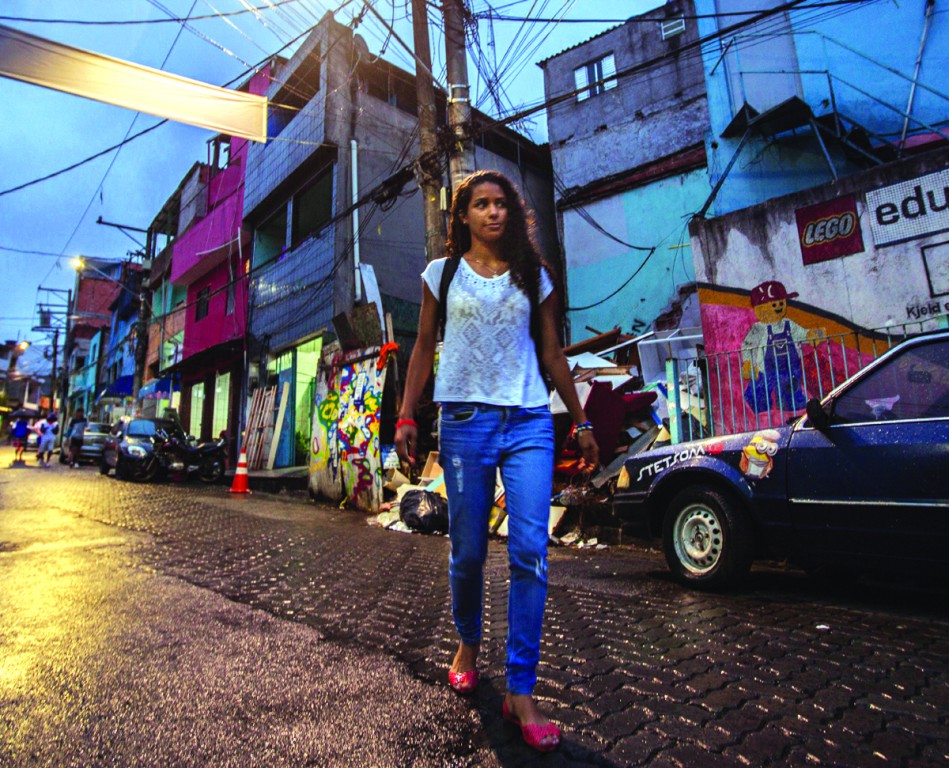
If I could add it to it, I would say that civil liberties remain theoretical as long as they are unaccompanied by economic freedom, an adequate underpinning legal framework and an un-hesitated, unmediated and unquestionable access to public spaces. While these may sound like individual factors, they are inextricably intertwined.
Understanding Public Safety for women can take a two-pronged approach. Firstly, from the perspective of ‘Urban Planning and Design’; secondly, and more importantly, from the perspective of underlying ‘Gender Relations’.
The planning and design features need to look at aspects of physical space, e.g.; lighting, width of sidewalks (for strollers), availability of benches and emergency phone booths, proximity to eating spaces, clear and well-lit paths, availability of clean toilets with diaper changing facilities etc. A successful design would probably look at the interaction of people in public spaces – possibly in the form of a participatory project which involves urban designers and women’s groups – and needs to ensure that people’s perception and expectation from a public space is taken into consideration. Such measures can feasibly result in a better design and a sense of safety for the female /queer users.
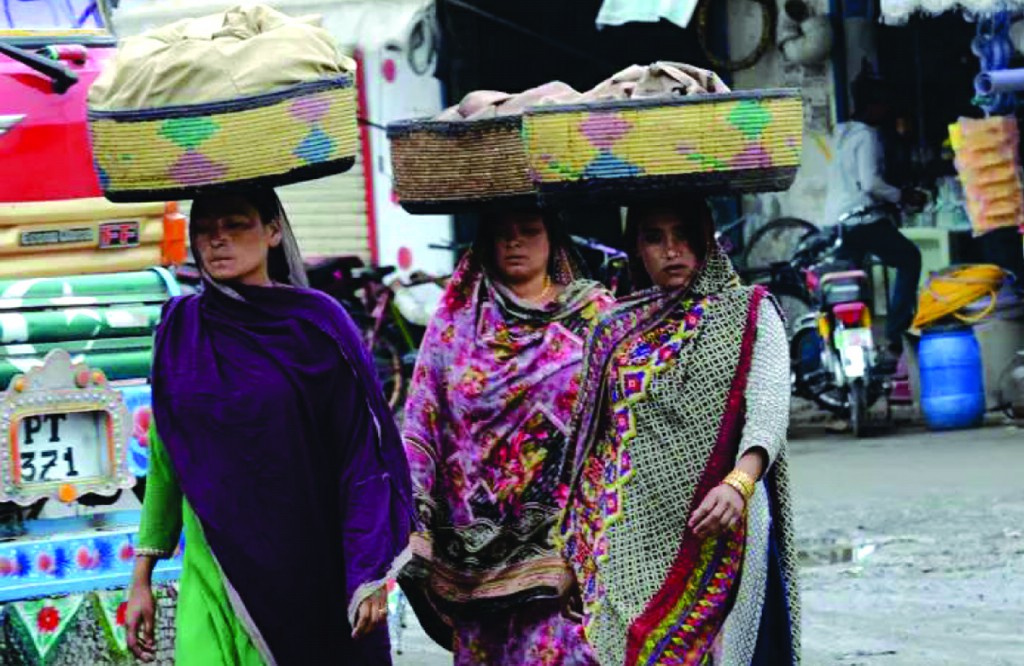
Spaces, however, like bodies and nationalism, are gendered. And so, spaces are not naturally, but socially and culturally gendered constructs. The nation, for instance, often constructed as a ‘motherland,’ invokes love and protection from sons (male citizens). Women’s bodies similarly are seen as sites of protection, war or exploitation. Noted philosopher and gender theorist Judith Butler uses the word ‘performativity’ to imply that gender is (re)produced through daily repetition of acts and behaviors. ‘Spaces’ in the same way acquire a gender by ‘performativity’. Women’s salons, for example, acquire a female gender. The same space can acquire an ‘unisex feel’ if it is for both genders. The places unfrequented by the female gender – such as tea houses, men’s bars – acquire a male character. They would then be considered unsafe for the female gender unless the presence of female gender serves a specific purpose there. Certain spaces – a basketball court in a public park for instance, to be used between 5-6:30 by women and 7-8:30 by men – can acquire a completely different character depending upon the time of the day.
What is it, then, apart from planning and design that can be done to make public spaces safer for women? A ‘safe spaces’ campaign, a mobilized civil society – can definitely be a step forward in the right direction. Indeed, there are laws against sexual violence and yet it is happening.
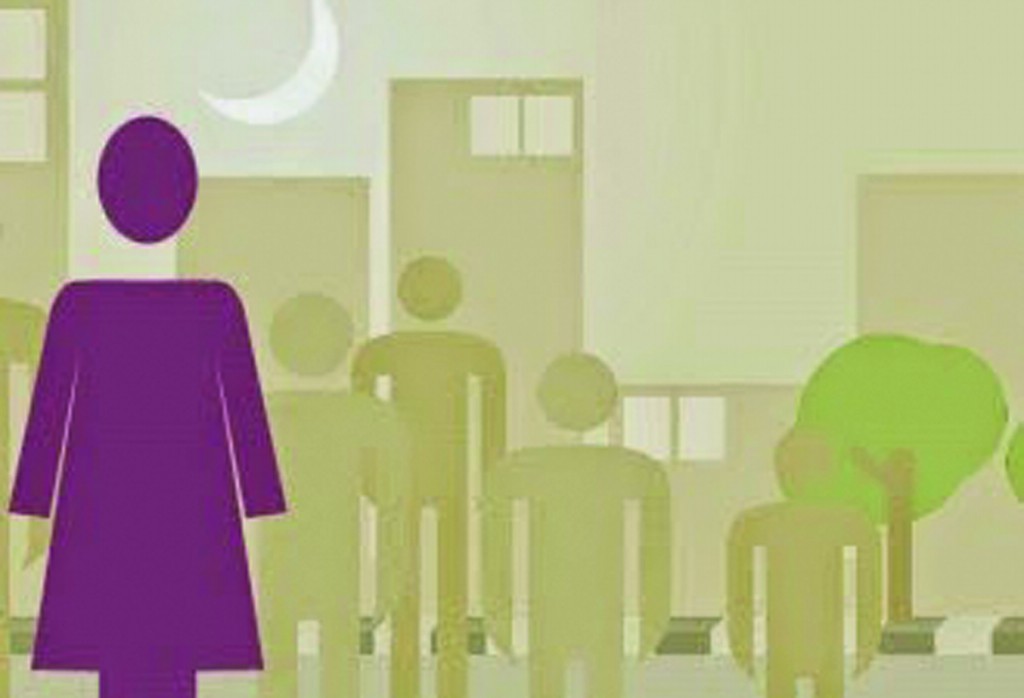
Does it mean that we need stricter laws? Could it possibly be more women in police and judiciary that can render public spaces safe? Or is it something more than that? Is it how the society views the women in the country? Are women seen predominantly in the reproductive roles – in the biological and ideological reproduction of the nation and transmission of culture? In order to produce a ‘pure’ nation, only pure and modest women would then be considered fit. Due to a huge imbalance in gender relations interwoven with patriarchy, South Asian countries, for centuries have been plagued by honour crimes and various other social practices aimed at ensuring the ‘purity and chastity’ of women. This ideology not only tends to control women’s sexuality and reproductive rights but also tends to confine them within the ‘reproductive sphere’ or their homes and hence limiting their need for access to public spaces. The same ideology supports the idea of ‘covered up’ women, somehow seeing that as a justification of ensuring that women’s bodies stay away from the ‘other’ man’s gaze in public spaces, hence ‘publicly guaranteeing’ their purity and chastity.
If women, on the other hand, are not seen merely as reproducers but as equally important economic producers in the country, their need for access to safe public spaces is justified and is taken care of. And if women need to use a wrecking ball between the ‘private reproductive spheres’ and the ‘public productive spheres,’ it needs to come as a public policy or trade initiative intervention, where the state is an important actor in creating and maintaining safe public spaces.
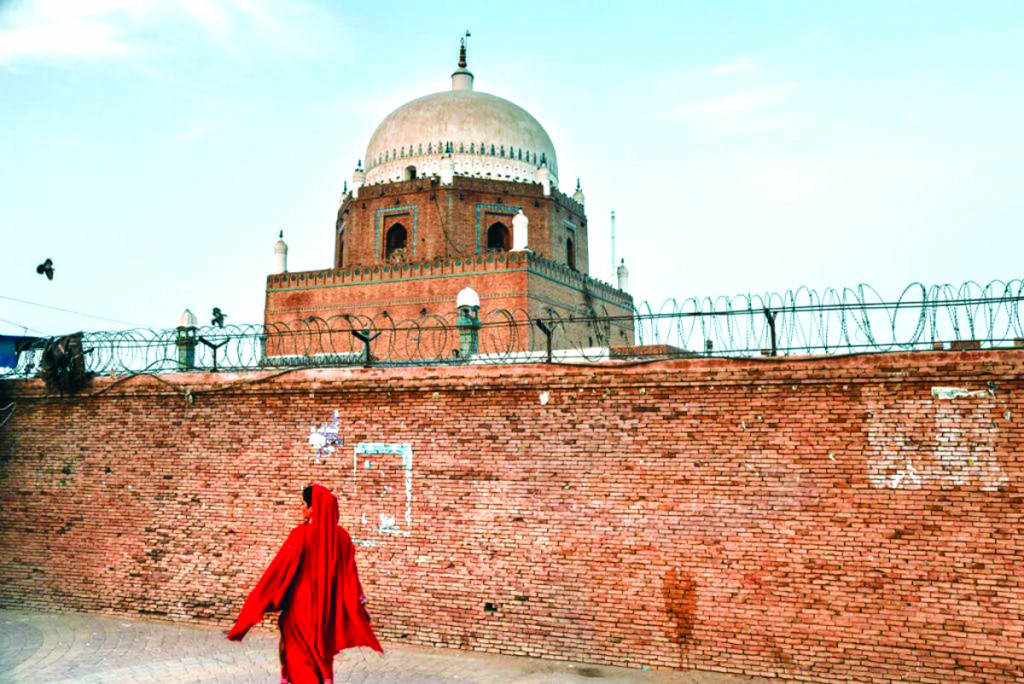
It has been empirically established worldwide that inclusion of women in the economic sphere does have a spillover impact on women’s safety. Often it has been seen that women’s security and safety, their economic empowerment, their ability to use public spaces and female labour force participation go in lockstep. In case of Pakistan and India, just by pointing to a low labour force participation, things are not going to change unless there are focused efforts in this direction.
The Case of Pakistan:
While there are constitutional provisions for the equality of both genders, as outlined in Article 25 of the Pakistani constitution, the ground reality is far from it. Pakistani women are often expected to exhibit a certain level of submission and obedience, the lack of which can even result in they being denied maintenance expenses in case of a divorce. According to a shadow report submitted by Aurat Foundation to the United Nations CEDAW committee, it is also expected of women to respect the institution of marriage and not to bring ‘shame’ on the family. Their main responsibility in a family is of a caregiver. Also, the Pakistani media, on one hand brings the gender issues to the fore and on the other, reinforces the gender stereotypes of woman as a primary caregiver and reestablishes women’s subordinate status in the society.
Out of an estimated 212 million, women make around a half of Pakistan’s population, but only 14 million are engaged in paid employment. While progress has been made in terms of including women in the labour force – since the year 2000, it has increased by almost 50 percent – Pakistan’s female labour force participation stands at 24 percent. Pakistani women’s share of unpaid care work is roughly 11 times that of Pakistani men. This leads to women having less time to acquire new skills for the job market or enter paid employment. Lack of permission from their male counterparts prohibits around 40 % of Pakistani women from engaging in paid employment.
Apart from other social, cultural and religious key reasons for low female labour force participation in Pakistan, unsafe public spaces result in women’s restricted mobility. Often women who are otherwise available do not want to work outside their homes or far away. This definitely calls for an economic and industrial policy which encourages women’s participation in the labour force and fosters a collective effort in rendering public spaces safe for women.
In conclusion, violence against women can happen in the ‘private spheres’ of their homes and in the ‘public spheres’ of workplace or public spaces. While domestic violence is harder to detect and redress due to social and cultural constrains, public space violence should be seen as a form of spatial justice and active endeavors need to be made in order for women to gain equal right to urban spaces.
A discussion of all the factors that can lead to the establishment of safe public spaces for women, especially socio-legal ones, is beyond the scope of this article. It can, however, be established that this is a multifaceted project with various aspects of public policy, law, and economics interwoven with the gender and culture dimensions. An informed effort on multiple fronts simultaneously might yield the desired result for the coming generations of South Asian and especially Pakistani women.
The author is currently working in Dubai as a senior Research Analyst. She is actively involved at the grassroot level with low-wage migrant workers, predominantly from South Asia and Africa, focussing on the post-Covid economic downturn, state unresponsiveness and health inequalities. Her main interest lies in analysis of gender and social inequality issues through the lenses of nation states, culture, economics and law
Through this article, I aim to link the unsafety of public spaces with a few underlying factors in South Asia and explore the reasons and possible remedial measures.
Simone de Beauvoir in her book The Second Sex says : “According to the French law, obedience is no longer included among the duties of a wife, and each woman citizen has the right to vote; but these civil liberties remain theoretical as long as they are unaccompanied by economic freedom.” - Chapter 1 The independent Woman (Part VII -Towards Liberation).

If I could add it to it, I would say that civil liberties remain theoretical as long as they are unaccompanied by economic freedom, an adequate underpinning legal framework and an un-hesitated, unmediated and unquestionable access to public spaces. While these may sound like individual factors, they are inextricably intertwined.
Understanding Public Safety for women can take a two-pronged approach. Firstly, from the perspective of ‘Urban Planning and Design’; secondly, and more importantly, from the perspective of underlying ‘Gender Relations’.
The planning and design features need to look at aspects of physical space, e.g.; lighting, width of sidewalks (for strollers), availability of benches and emergency phone booths, proximity to eating spaces, clear and well-lit paths, availability of clean toilets with diaper changing facilities etc. A successful design would probably look at the interaction of people in public spaces – possibly in the form of a participatory project which involves urban designers and women’s groups – and needs to ensure that people’s perception and expectation from a public space is taken into consideration. Such measures can feasibly result in a better design and a sense of safety for the female /queer users.

Spaces, however, like bodies and nationalism, are gendered. And so, spaces are not naturally, but socially and culturally gendered constructs. The nation, for instance, often constructed as a ‘motherland,’ invokes love and protection from sons (male citizens). Women’s bodies similarly are seen as sites of protection, war or exploitation. Noted philosopher and gender theorist Judith Butler uses the word ‘performativity’ to imply that gender is (re)produced through daily repetition of acts and behaviors. ‘Spaces’ in the same way acquire a gender by ‘performativity’. Women’s salons, for example, acquire a female gender. The same space can acquire an ‘unisex feel’ if it is for both genders. The places unfrequented by the female gender – such as tea houses, men’s bars – acquire a male character. They would then be considered unsafe for the female gender unless the presence of female gender serves a specific purpose there. Certain spaces – a basketball court in a public park for instance, to be used between 5-6:30 by women and 7-8:30 by men – can acquire a completely different character depending upon the time of the day.
I would say that civil liberties remain theoretical as long as they are unaccompanied by economic freedom, an adequate underpinning legal framework and an un-hesitated, unmediated and unquestionable access to public spaces
What is it, then, apart from planning and design that can be done to make public spaces safer for women? A ‘safe spaces’ campaign, a mobilized civil society – can definitely be a step forward in the right direction. Indeed, there are laws against sexual violence and yet it is happening.

Does it mean that we need stricter laws? Could it possibly be more women in police and judiciary that can render public spaces safe? Or is it something more than that? Is it how the society views the women in the country? Are women seen predominantly in the reproductive roles – in the biological and ideological reproduction of the nation and transmission of culture? In order to produce a ‘pure’ nation, only pure and modest women would then be considered fit. Due to a huge imbalance in gender relations interwoven with patriarchy, South Asian countries, for centuries have been plagued by honour crimes and various other social practices aimed at ensuring the ‘purity and chastity’ of women. This ideology not only tends to control women’s sexuality and reproductive rights but also tends to confine them within the ‘reproductive sphere’ or their homes and hence limiting their need for access to public spaces. The same ideology supports the idea of ‘covered up’ women, somehow seeing that as a justification of ensuring that women’s bodies stay away from the ‘other’ man’s gaze in public spaces, hence ‘publicly guaranteeing’ their purity and chastity.
If women, on the other hand, are not seen merely as reproducers but as equally important economic producers in the country, their need for access to safe public spaces is justified and is taken care of. And if women need to use a wrecking ball between the ‘private reproductive spheres’ and the ‘public productive spheres,’ it needs to come as a public policy or trade initiative intervention, where the state is an important actor in creating and maintaining safe public spaces.

It has been empirically established worldwide that inclusion of women in the economic sphere does have a spillover impact on women’s safety. Often it has been seen that women’s security and safety, their economic empowerment, their ability to use public spaces and female labour force participation go in lockstep. In case of Pakistan and India, just by pointing to a low labour force participation, things are not going to change unless there are focused efforts in this direction.
The Case of Pakistan:
While there are constitutional provisions for the equality of both genders, as outlined in Article 25 of the Pakistani constitution, the ground reality is far from it. Pakistani women are often expected to exhibit a certain level of submission and obedience, the lack of which can even result in they being denied maintenance expenses in case of a divorce. According to a shadow report submitted by Aurat Foundation to the United Nations CEDAW committee, it is also expected of women to respect the institution of marriage and not to bring ‘shame’ on the family. Their main responsibility in a family is of a caregiver. Also, the Pakistani media, on one hand brings the gender issues to the fore and on the other, reinforces the gender stereotypes of woman as a primary caregiver and reestablishes women’s subordinate status in the society.
Out of an estimated 212 million, women make around a half of Pakistan’s population, but only 14 million are engaged in paid employment. While progress has been made in terms of including women in the labour force – since the year 2000, it has increased by almost 50 percent – Pakistan’s female labour force participation stands at 24 percent. Pakistani women’s share of unpaid care work is roughly 11 times that of Pakistani men. This leads to women having less time to acquire new skills for the job market or enter paid employment. Lack of permission from their male counterparts prohibits around 40 % of Pakistani women from engaging in paid employment.
Apart from other social, cultural and religious key reasons for low female labour force participation in Pakistan, unsafe public spaces result in women’s restricted mobility. Often women who are otherwise available do not want to work outside their homes or far away. This definitely calls for an economic and industrial policy which encourages women’s participation in the labour force and fosters a collective effort in rendering public spaces safe for women.
In conclusion, violence against women can happen in the ‘private spheres’ of their homes and in the ‘public spheres’ of workplace or public spaces. While domestic violence is harder to detect and redress due to social and cultural constrains, public space violence should be seen as a form of spatial justice and active endeavors need to be made in order for women to gain equal right to urban spaces.
A discussion of all the factors that can lead to the establishment of safe public spaces for women, especially socio-legal ones, is beyond the scope of this article. It can, however, be established that this is a multifaceted project with various aspects of public policy, law, and economics interwoven with the gender and culture dimensions. An informed effort on multiple fronts simultaneously might yield the desired result for the coming generations of South Asian and especially Pakistani women.
The author is currently working in Dubai as a senior Research Analyst. She is actively involved at the grassroot level with low-wage migrant workers, predominantly from South Asia and Africa, focussing on the post-Covid economic downturn, state unresponsiveness and health inequalities. Her main interest lies in analysis of gender and social inequality issues through the lenses of nation states, culture, economics and law

